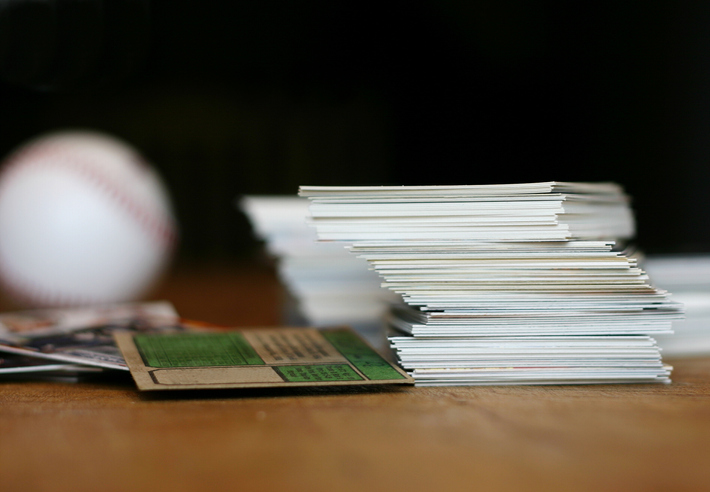How to Find Buyers for Your Baseball Card Collection
The first step to selling baseball cards is finding out the value of what you own.


Question: I have collected nearly 8,000 baseball cards and now want to sell them. How do I find buyers?
Answer: You have a few options for locating buyers for your collection of baseball cards. You can auction them yourself on eBay, sell them to a local card shop or dealer, or go to an auction house and have it sell the cards as one big lot. But before you start selling, it’s best to take stock of what you have to see which cards are more valuable than others.
As a rule of thumb, cards are separated into three categories based on the date they were printed: Pre-war, Vintage and Modern era. Pre-war cards, typically printed before the 1950s, tend to fetch a higher premium than cards printed in the 1980s or 1990s. Cards printed in later years are less valuable because they’re more likely to be mass-produced.

Sign up for Kiplinger’s Free E-Newsletters
Profit and prosper with the best of expert advice on investing, taxes, retirement, personal finance and more - straight to your e-mail.
Profit and prosper with the best of expert advice - straight to your e-mail.
The condition of the card is also a major factor in the price it can command. Frayed or damaged cards will fetch less than those in mint or good shape. There are three big players that grade the condition of baseball cards: Professional Sports Authenticator (PSA), SGC Card and Beckett Grading Services. Each service grades cards on a scale of 1 to 10, with 10 being pristine condition.
For example, a 1952 Topps Mickey Mantle rookie card graded as in mint condition by PSA sold last year for $2.88 million. And a 1955 Topps Roberto Clemente rookie card in mint condition fetched $264,000 last year.
Recently, vintage cards from any sport have garnered world-record prices, with high-grade rookie Hall of Famer cards leading the pack, according to Michael Osacky, president of Baseball in the Attic, an educational website for sports memorabilia. “Cards are now being seen as an asset class, and there’s new money coming to market,” he says.
Osacky adds that not every card is worth grading, so it’s best to do some digging or talk to an expert. For example, a grading could cost $10 to $15 for a card that may be worth only $25.
For a collection as large as yours, Osacky says that eBay takes a lot of work if you’ve never sold on the site before. You must photograph each card, write a description, set up a PayPal account to receive payment, and more. Plus eBay charges 10% of the total sale amount for listings. (An auction house will take a percentage of the sale, too, but using one may be less of a hassle.)
You can, of course, shop your cards around to local card dealers to see what you can get. But if you do have a rare gem—say, a Mickey Mantle rookie card in flawless condition—you’re likely best off selling it through an auction house, which can attract more potential buyers with deep pockets to bid up the price.
Get Kiplinger Today newsletter — free
Profit and prosper with the best of Kiplinger's advice on investing, taxes, retirement, personal finance and much more. Delivered daily. Enter your email in the box and click Sign Me Up.

Rivan joined Kiplinger on Leap Day 2016 as a reporter for Kiplinger's Personal Finance magazine. A Michigan native, she graduated from the University of Michigan in 2014 and from there freelanced as a local copy editor and proofreader, and served as a research assistant to a local Detroit journalist. Her work has been featured in the Ann Arbor Observer and Sage Business Researcher. She is currently assistant editor, personal finance at The Washington Post.